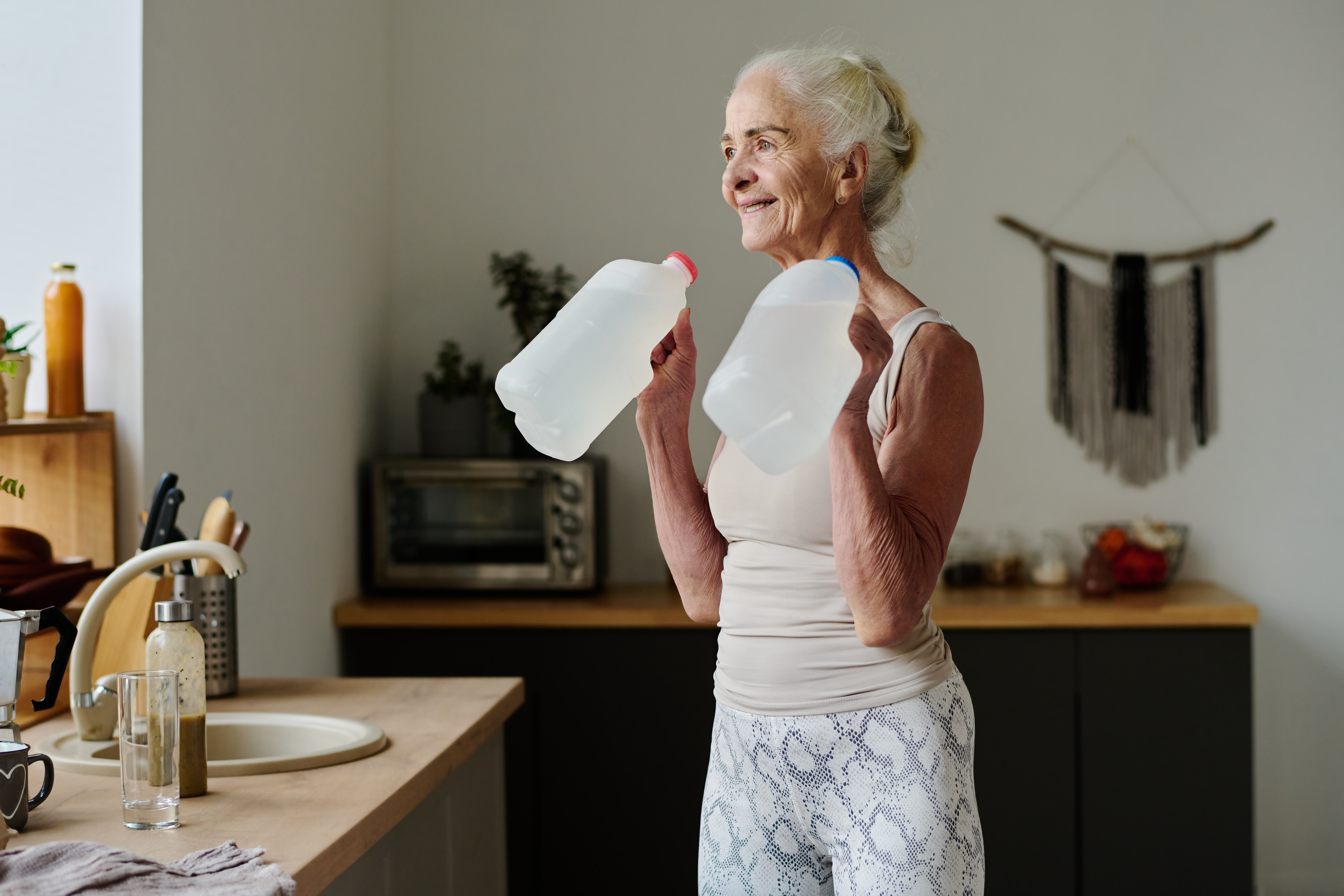Science-Backed Moves to Combat Age-Related Muscle Loss
15. Collagen Support for Muscle Integrity

Collagen isn’t just for skin—it’s a key structural protein in muscles, tendons, and ligaments. As we age, collagen production declines, weakening the connective tissue that supports muscle strength and mobility. Supplementing with collagen peptides, particularly hydrolyzed forms combined with vitamin C, has been shown to improve muscle repair and joint function. It’s especially beneficial for those recovering from injury or aiming to maintain workout consistency. Bone broth, gelatin, and collagen powders can easily be added to meals or smoothies. Supporting collagen production helps reinforce muscle integrity from the inside out, reducing the risk of injury and promoting functional strength.
16. Neuromuscular Activation Exercises

Age-related muscle loss isn’t just about mass—it’s also about connection. The brain-muscle link weakens with age, reducing coordination, strength, and stability. Neuromuscular activation exercises—like controlled foot drills, isometric holds, and slow, mindful movement—help retrain these pathways. Think of it as muscle re-education: teaching your body to “fire” more effectively. These exercises improve balance, prevent falls, and maximize output from existing muscle fibers. Incorporate them into warm-ups or low-impact days to reinforce coordination. It’s not always about lifting heavier—it’s about getting your body to use what it already has, smarter and sharper.
